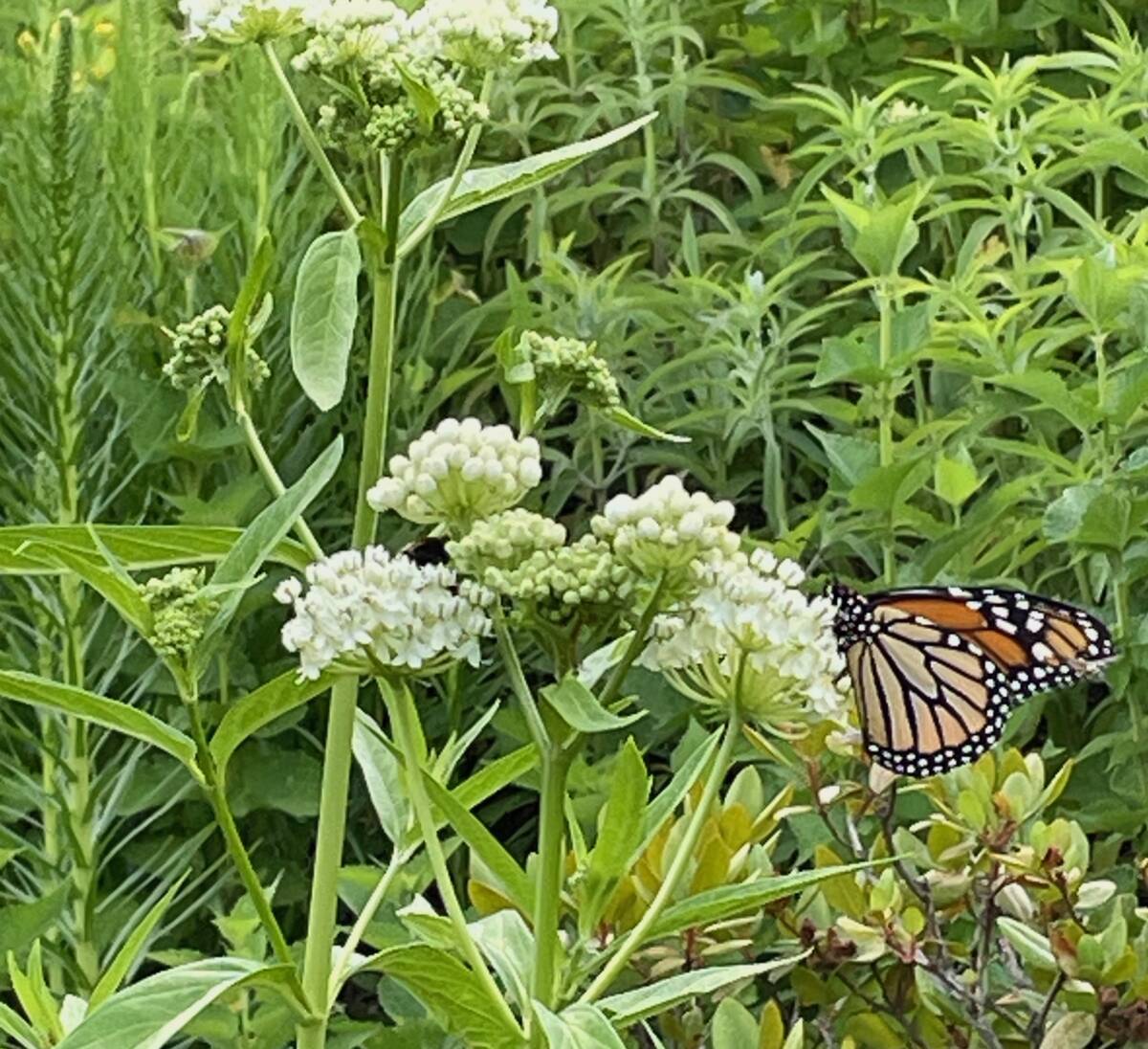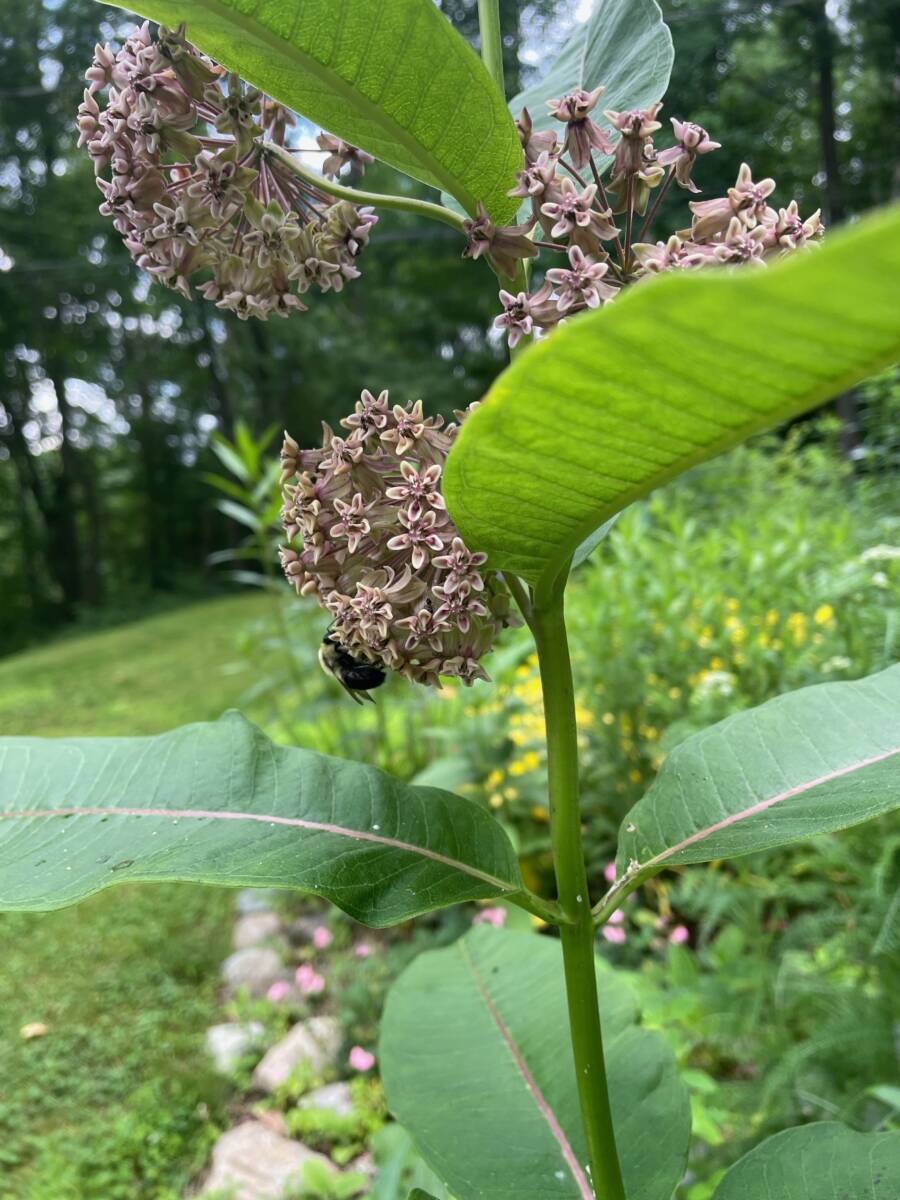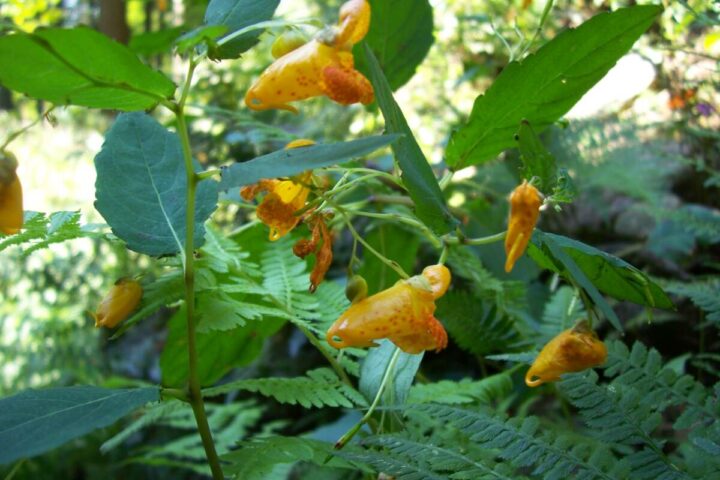Have you ever read about the amazing journey of Monarch butterflies and wondered if you could help support them? An essential way to support Monarch butterflies is to plant what Monarchs need for their lifecycle.
Adult Monarch butterflies look for a variety of flowers that provide nectar. To lay their eggs, they require plants in the Asclepias family — milkweeds — because their larva (caterpillars) can only eat milkweed plants.
Monarch butterflies generally show up in Connecticut in late June. Common perennial garden plants like coneflower, phlox, Joe Pye weed, black-eyed Susan, asters and goldenrods provide nectar for the butterflies.
If your space is limited, planters of annuals like zinnias, cosmos, and verbena will also attract the butterflies.

To help Monarchs complete their lifecycle, plant milkweed. Asclepias tuberosa (Butterfly Weed) grows to about two-feet-tall and is topped by clusters of orange flowers. It likes well-drained soil and full sun. Butterfly Weed forms a taproot (like a carrot), which makes it hard to transplant so plant it where you want it to stay. Let it go to seed in the fall and you will get more plants every year.
Asclepias incarnata (Rose or Swamp Milkweed) grows to about four-feet-tall. It generally has pink flowers, but it is not unusual for a plant to produce white flowers. It likes full sun and moist soil, but is adaptable to drier conditions. It will also self-sow.
Asclepias syriaca (Common Milkweed) produces large clusters of pink flowers that have a lovely scent. Common Milkweed likes full sun. It spreads pretty aggressively, so it may be better for a large meadow-like garden rather than a smaller more manicured garden.
Monarch butterflies have an amazing way of finding Milkweed plants. It you plant them you most likely will be treated to seeing Monarchs and other butterflies and bees. You may even see a Monarch caterpillar form a chrysalis and emerge as a butterfly 10 to 14 days.
This Monroe Pollinator Pathway article is sponsored by the Monroe Conservation and Water Resources Commission.
All respectful comments with the commenter’s first and last name are welcome.










